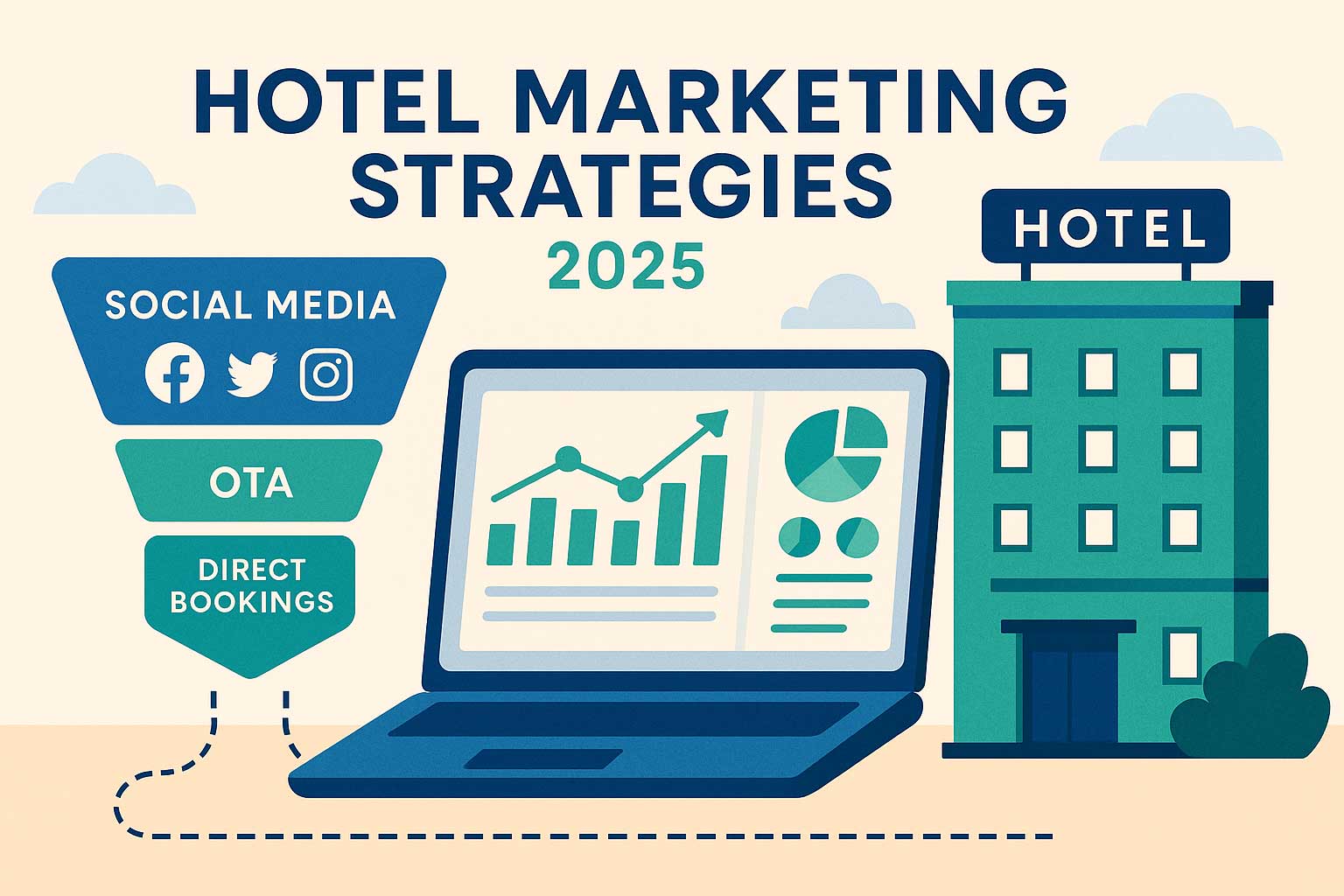2025 Hotel Guide to Non-Refundable Rates
Aug 28, 2025
 Mika Takahashi
Mika TakahashiPopular Categories
Hotel Technology & InnovationHotel Operations OptimizationDigital MarketingIndustry TrendsRevenue ManagementHospitality Industry
Popular Categories
Trending Post

Hotel Walk Letter Template: Professional Guest Communication

Online Travel Agents: What They Are and How They Work

Hotel Security Systems: Modern Protection Solutions

Hotel Advertising: Complete Guide to Boost Bookings and Revenue

25 Hotel Marketing Strategy Ideas for 2025: Complete Guide

AI Reservation Agent: Revolutionizing Hotel Booking and Guest Experience

PMS Communication: Streamlining Property Management Through Effective Guest Messaging
Table of contents
In today’s competitive hospitality world, non refundable rates have become a key pricing strategy that’s changing how hotels manage their revenue and fill rooms. These rates usually come with a 5-15% discount compared to more flexible options, offering guests a chance to save money while giving hotels the financial certainty they need.
With flexible hotel reservations often seeing cancellation rates over 20%, non refundable rates help hotels lock in guaranteed payments upfront and reduce the unpredictability that comes with last-minute cancellations. If you’re a hotel manager looking to boost profits and simplify operations, understanding how non refundable rates work and their perks is essential.
This guide covers everything you need to know about non refundable rates — from how they work to the benefits and best practices for hotels.
What Are Non-Refundable Rates?
Simply put, non refundable rates are prepaid hotel bookings that don’t allow cancellations or refunds once you’ve booked. Unlike flexible rates that usually let guests cancel up to 24-48 hours before check-in without penalty, non refundable rates require full payment right away, and if plans change, there’s no getting that money back.
This approach shifts the risk to the guest, allowing hotels to offer a lower price in exchange for guaranteed revenue. Hotels usually set these rates up as separate options in their property management systems (PMS), so it’s clear to guests how they differ from refundable choices.
Discounts typically range from 5% to 15% off standard flexible rates, depending on the hotel, season, and demand. By collecting payment at booking, hotels improve cash flow and avoid the hassle of last-minute cancellations.
Why Hotels Offer Non-Refundable Rates
The main reason hotels offer non refundable rates is to reduce the impact of cancellations, which can lead to lost revenue and operational headaches. Flexible bookings often see cancellation rates above 20%, making it hard to predict occupancy and schedule staff.
By requiring payment upfront, hotels protect their income from no-shows and last-minute changes. This guaranteed revenue is especially valuable during busy seasons, special events, or uncertain economic times when predicting demand is tricky.
Non refundable rates also help cash flow by getting money in early, which can be used to cover expenses, invest in improvements, and reduce reliance on credit during slow periods.
Hotels also benefit operationally because fewer cancellations mean less time spent on rebooking and managing changes. This leads to steadier occupancy, making it easier to plan housekeeping, food service, and other hotel operations.
Plus, with a more predictable booking base, hotels can fine-tune pricing strategies and allocate resources more efficiently.
Finally, these rates attract budget-conscious travelers who prioritize savings over flexibility, broadening the hotel’s customer base while still offering higher-priced refundable options for those who want peace of mind.
Benefits for Hotels
Better Revenue Management
Non refundable rates give revenue managers a valuable tool to segment demand and optimize pricing. With guaranteed payments, hotels can price flexible rates more competitively, balancing risk and reward to maximize revenue per available room (RevPAR).
Lower Administrative Costs
Handling cancellations takes time and resources—processing refunds, updating systems, and managing rebookings. Non refundable rates cut down on this workload, streamlining operations and freeing up staff.
Stable Occupancy and Planning
Predictable bookings help hotels plan staffing, housekeeping, and inventory more accurately. This stability improves guest experience and reduces waste caused by fluctuating occupancy.
Smooth Integration with PMS and Payment Systems
Since payment happens at booking, hotels can automate billing and reconciliation, reducing errors and disputes from no-shows or early departures. Integration with payment processors and PMS makes financial management more efficient.
How Non-Refundable Rates Compare to Other Hotel Rate Types
Hotels usually offer several hotel rate options to meet different guest needs. Here’s a quick look at how non refundable rates stack up against others:
Non-Refundable vs. Refundable Rates
Refundable rates let guests cancel up to 24-48 hours before check-in for a full refund, offering flexibility but at a higher price. Non refundable rates require full payment upfront with no refunds, making them cheaper but riskier for guests. Hotels gain guaranteed payment and fewer cancellations with non refundable rates.
Non-Refundable vs. Flexible Rates
Flexible rates are similar to refundable but may allow date changes without penalty, usually costing the most. Non refundable rates are less expensive but don’t allow changes or cancellations, putting all risk on the guest.
Non-Refundable vs. Advance Purchase Rates
Advance purchase rates require early booking and payment, often discounted and non-refundable. The difference is advance purchase rates encourage early planning, while non refundable rates can apply to bookings closer to the stay date.
Non-Refundable vs. Last-Minute or Walk-In Rates
Last-minute or walk-in rates often offer discounts to fill unsold rooms near arrival. They may be refundable or not, depending on hotel policy. Non refundable rates are usually booked in advance with guaranteed payment, providing more revenue certainty.
Summary Table
| Rate Type | Flexibility | Price Level | Payment Timing | Cancellation Policy |
|---|---|---|---|---|
| Non-Refundable | None | Lower | Full payment upfront | No refund if canceled |
| Refundable | High | Higher | Payment at booking or arrival | Full refund if canceled in time |
| Flexible | High | Highest | Usually payment at booking | Can modify or cancel without penalty |
| Advance Purchase | None | Discounted | Full payment upfront | No refund, must book early |
| Last-Minute/Walk-In | Varies | Discounted | Payment at booking or arrival | Varies |
Offering a mix of rate types—including non refundable options—helps hotels appeal to a wide range of guests while optimizing revenue and occupancy.
Challenges and How to Overcome Them
Handling Chargebacks and Disputes
Even with clear policies, some guests might try to dispute charges. Hotels should keep detailed records and communicate policies clearly to defend against these effectively.
Clear Policy Communication
It’s vital to disclose non refundable terms prominently during booking to avoid confusion. Hotels should make sure guests explicitly agree to these terms to minimize conflicts later.
Staff Training
Front desk and customer service staff need thorough training on non refundable policies to provide consistent information and handle guest questions smoothly.
Flexible Rebooking Options
Some hotels offer limited flexibility for exceptional cases, like allowing date changes for a fee or credit toward future stays during emergencies. This can boost guest satisfaction without risking revenue.
Technical Integration
Coordinating booking platforms, PMS, and payment processors is key to smooth prepayment handling. Ensuring secure payments and accurate financial reporting is essential.
Best Practices for Hotels
- Set Smart Discounts: Experiment with discounts (usually 10-20%) to find the right balance between attracting guests and protecting revenue.
- Be Transparent: Display cancellation policies clearly, using simple language and requiring guest acknowledgment.
- Train Your Team: Make sure staff understand policies and have tools to handle questions professionally.
- Track Performance: Regularly review cancellation rates and revenue to adjust strategies as needed.
- Use Technology: Leverage advanced revenue management and integrated payment systems to streamline processes.
Hotel Booking Trends in 2024
Looking at recent data helps hotels understand traveler preferences and adjust pricing:
- Non-Refundable Rates: About 22% of bookings use non refundable rates, a slight increase as travelers look for savings and hotels push guaranteed payments.
- Refundable Rates: Still the most popular, accounting for roughly 55% of bookings, favored for flexibility and peace of mind.
- Advance Purchase Rates: Approximately 12% of bookings, appealing to planners confident in their travel.
- Last-Minute and Walk-In Rates: Around 8%, often discounted to fill last-minute inventory.
- Other Rates: The remaining 3% includes corporate, group, packages, and promotions.
These numbers show growing acceptance of non refundable rates, especially with travel insurance helping guests manage risk. Hotels balancing rate types can better meet diverse needs while boosting revenue and cutting cancellations.
When Do Non-Refundable Rates Work Best?
Non refundable rates shine during busy seasons and peak travel times when hotels face high booking volumes and risk of cancellations. Holidays, major events, festivals, and peak vacation months are prime examples.
During these periods, upfront payment guarantees revenue and helps manage occupancy. Discounted non refundable rates attract price-sensitive guests willing to commit early, maximizing sales.
In slower seasons, guests often prefer flexibility, so hotels might promote refundable rates more. Non refundable rates can also be strategically offered during conventions or special events to ensure steady revenue.
Aligning non refundable rate offerings with seasonal demand and market conditions helps hotels optimize revenue and profitability.
Industry Outlook
Post-pandemic, non refundable rates have bounced back strongly as travel picks up. Hotels increasingly treat these rates as vital parts of dynamic pricing, similar to airlines where non refundable fares dominate.
Both business and leisure travelers are more comfortable with these options, thanks to cost savings and risk management tools like travel insurance.
Technology continues to make offering non refundable rates easier and more transparent.
Looking ahead, non refundable rates are expected to grow in importance, shifting flexibility toward premium options and embedding risk-based pricing into hotel revenue strategies.
Conclusion
For hotels, non refundable rates offer a powerful way to secure guaranteed revenue, reduce operational headaches, and improve occupancy. When paired with clear communication, well-trained staff, and smart discounting, these rates can boost financial performance and competitive edge.
By including non refundable rates in a diverse pricing mix, hotels can better navigate market ups and downs, attract more guests, and build a stronger, more resilient business for the future.
